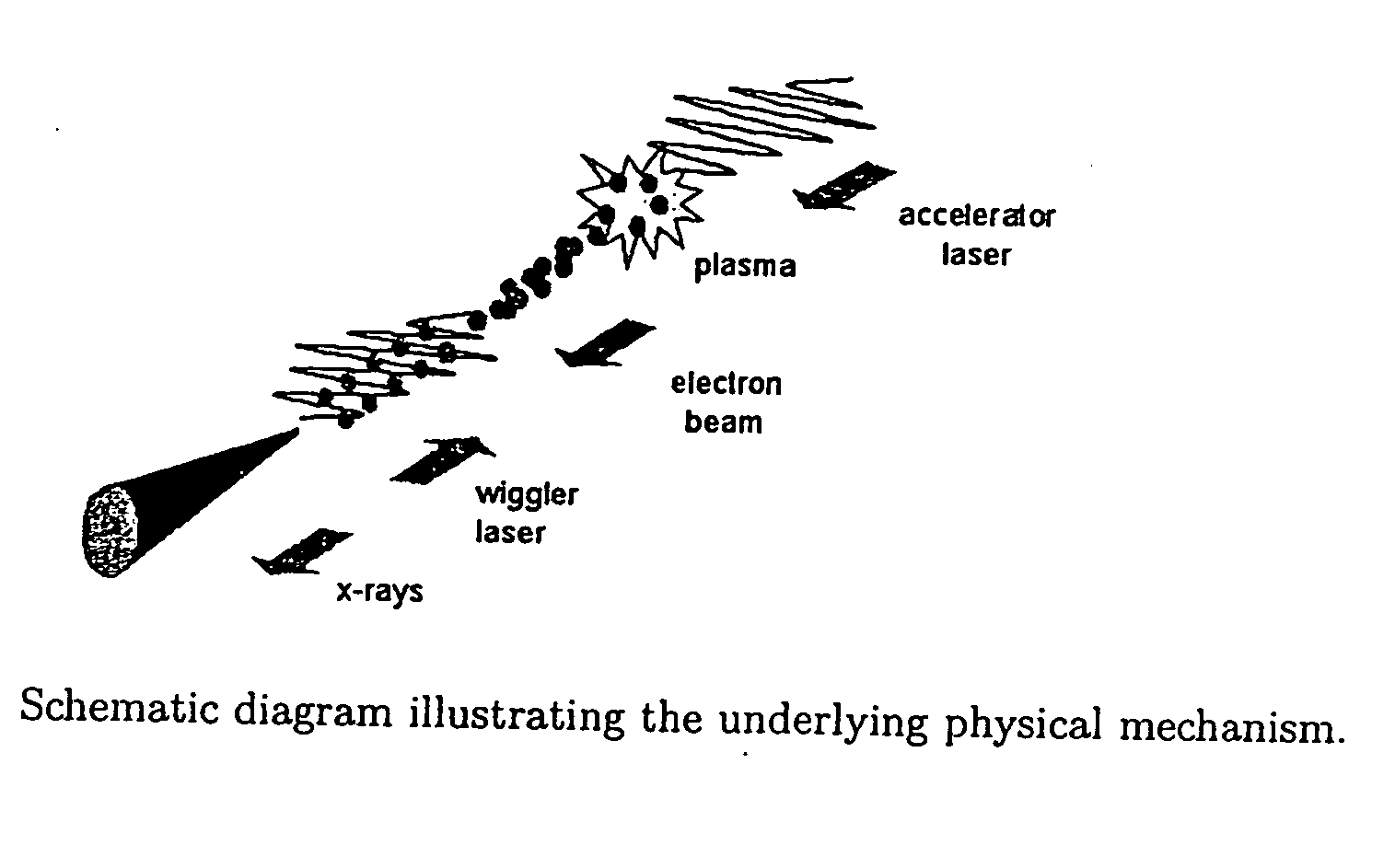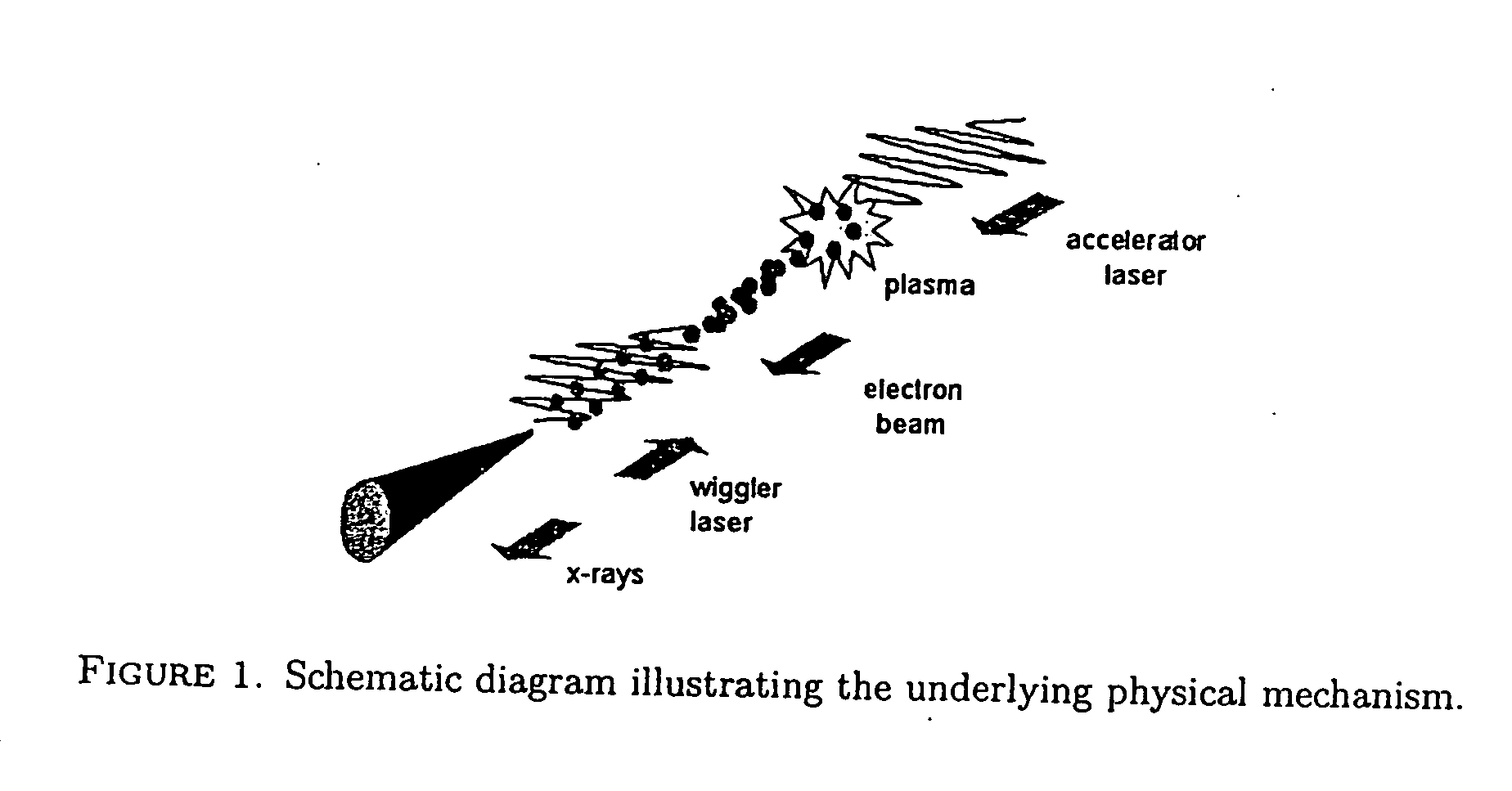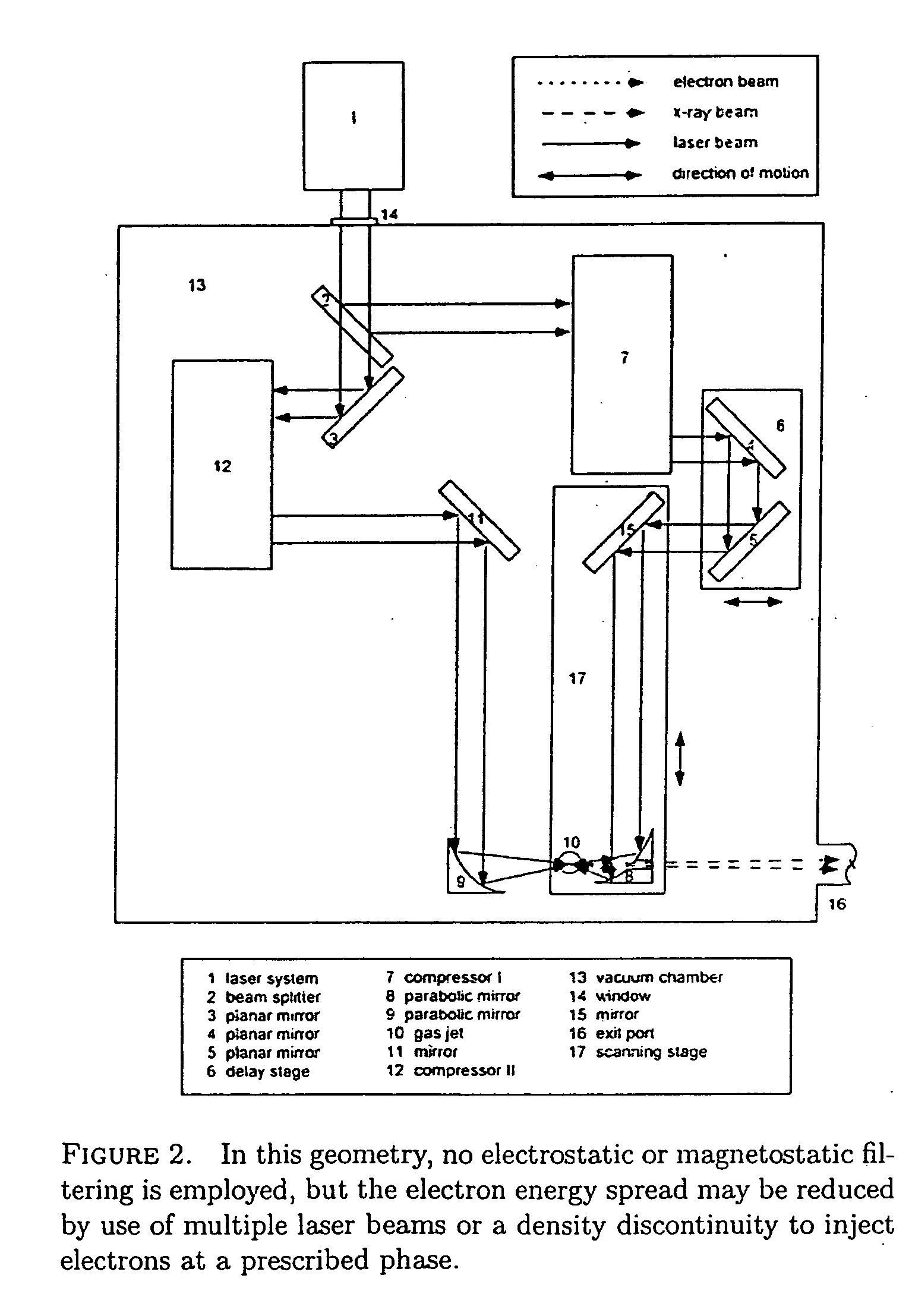Ultra-short wavelength x-ray system
a technology of ultra-short wavelength x-ray and x-ray system, which is applied in the direction of laser details, excitation process/apparatus, electrical apparatus, etc., can solve the problem of large fluxes that are not currently produced by any source, and achieve the effect of increasing the flux, and increasing the flux of short-wavelength radiation
- Summary
- Abstract
- Description
- Claims
- Application Information
AI Technical Summary
Benefits of technology
Problems solved by technology
Method used
Image
Examples
Embodiment Construction
[0036] The following description of the preferred embodiment(s) is merely exemplary in nature and is in no way intended to limit the invention, its application, or uses.
[0037] Laser-based accelerators currently produce electron beams that are well collimated (less than 1-degree divergence angle) with nanoCoulombs of charge, with sub-picosecond pulse durations and at repetition rates of 10 Hz. They are based on the generation of high amplitude plasma waves by high-power lasers, by one of several mechanisms, such as the self-modulated laser wakefield acceleration mechanism, the resonantly driven wakefield mechanism (see Umstadter U.S. Pat. No. 5,637,966), and the beatwave accelerator mechanism. One important attribute of these optically-driven accelerators as compared to their more conventional radio-frequency based counterparts is that the accelerating gradient (1 GeV / cm) is four orders of magnitude greater. Thus electron energies of 100-million electron volts (MeV) can be achieved ...
PUM
 Login to View More
Login to View More Abstract
Description
Claims
Application Information
 Login to View More
Login to View More - R&D
- Intellectual Property
- Life Sciences
- Materials
- Tech Scout
- Unparalleled Data Quality
- Higher Quality Content
- 60% Fewer Hallucinations
Browse by: Latest US Patents, China's latest patents, Technical Efficacy Thesaurus, Application Domain, Technology Topic, Popular Technical Reports.
© 2025 PatSnap. All rights reserved.Legal|Privacy policy|Modern Slavery Act Transparency Statement|Sitemap|About US| Contact US: help@patsnap.com



